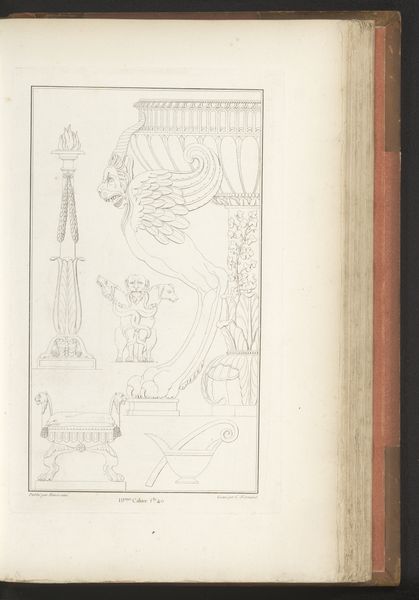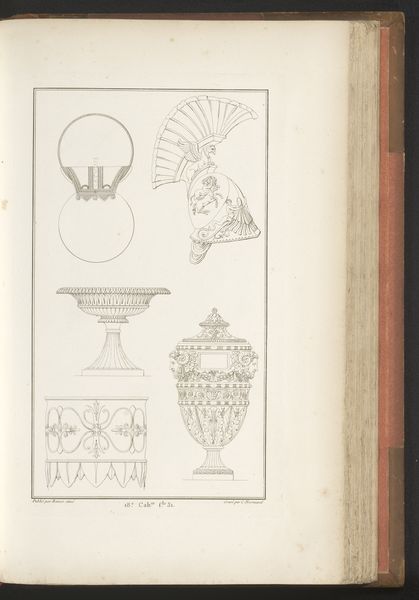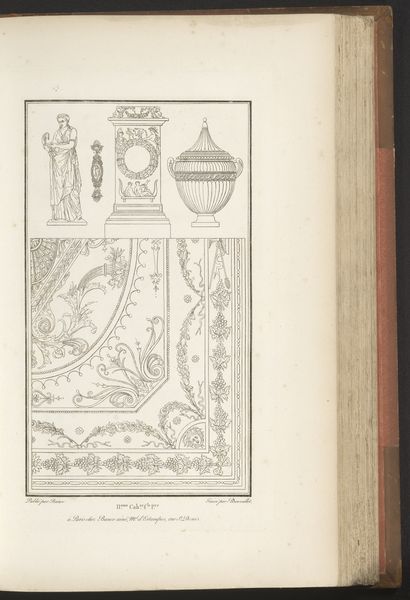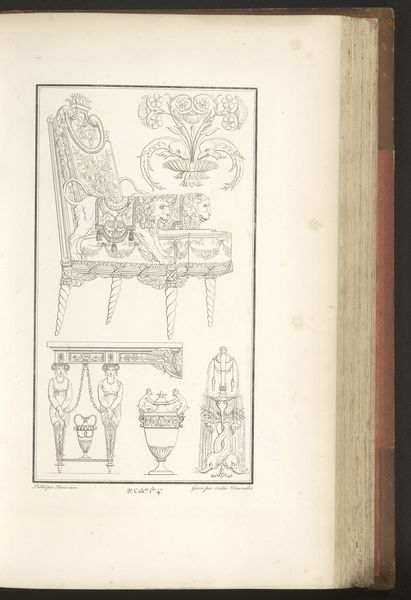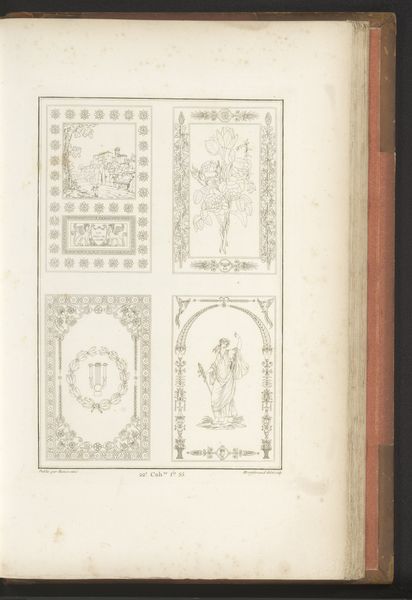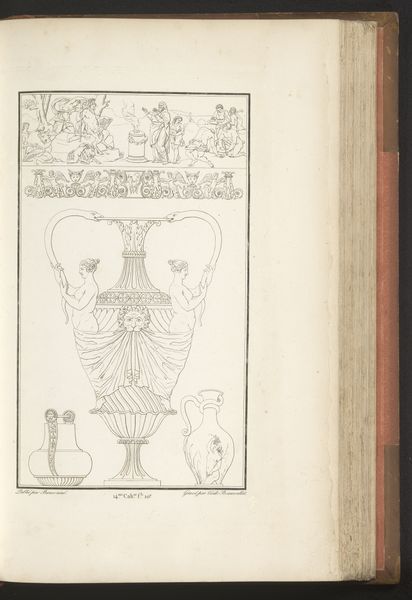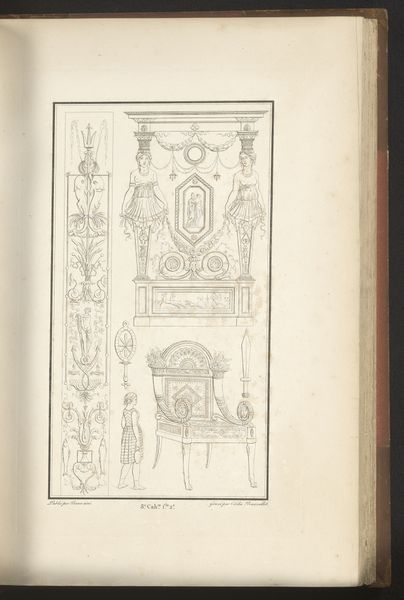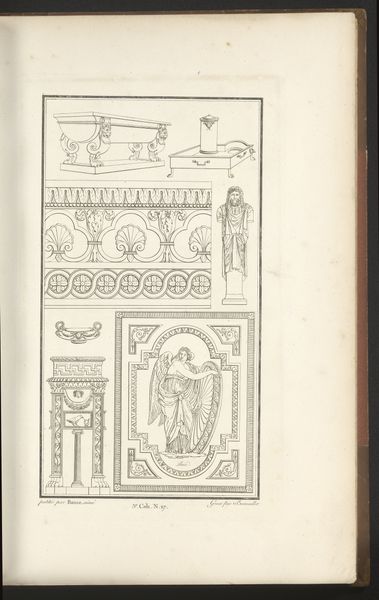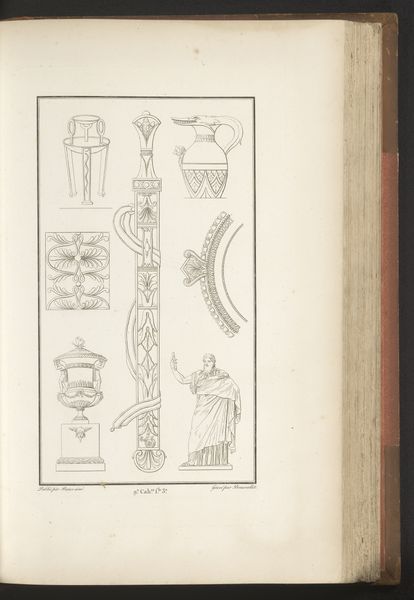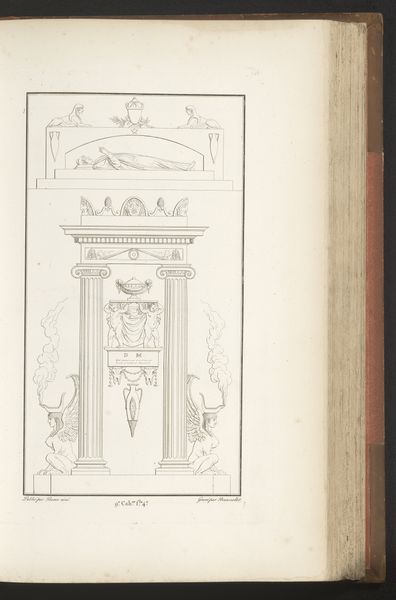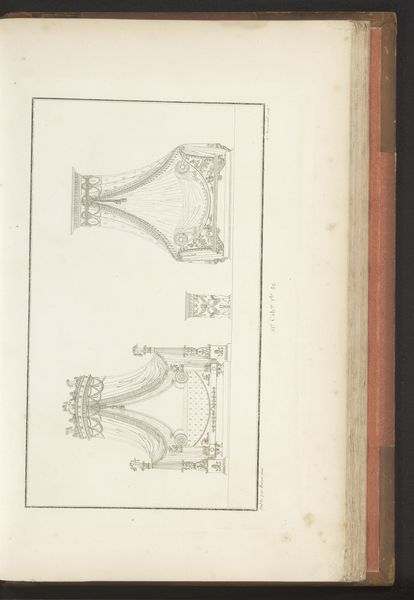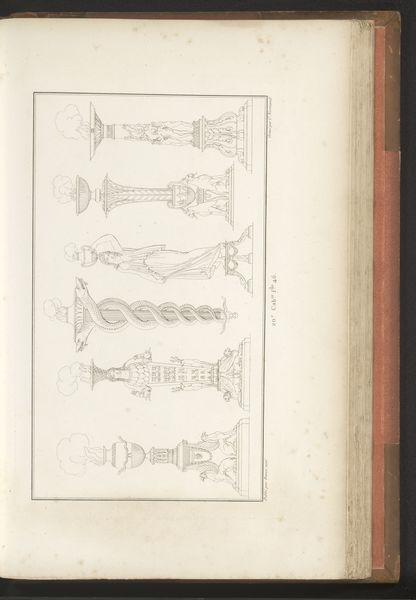
drawing, paper, ink, pen, architecture
#
drawing
#
neoclacissism
#
sketch book
#
paper
#
form
#
ink
#
line
#
pen work
#
pen
#
academic-art
#
architecture
Dimensions: height mm, width mm
Copyright: Rijks Museum: Open Domain
Editor: This is a page titled "Kapiteel," or "Capital" in Dutch, a drawing from 1820 by Charles Pierre Joseph Normand. It seems to be a page of architectural sketches rendered in ink. I find the linear precision very appealing. What's your take on it? Curator: It speaks to the enduring allure of classical forms. The torch, the capital with its acanthus leaves, even the amphora - all visual shorthand for ideas of enlightenment, civic virtue, and ordered beauty. The pen work reinforces this through the suggestion of 'truth' and accuracy in portraying reality. The symbolic language, repeated through generations, whispers of cultural continuity. Editor: So, it's more than just a drawing of architectural elements? Curator: Much more! Consider the context: 1820, the rise of Neoclassicism. What are they reaching back to? The Roman Empire, seen as ordered and ideal; what emotional or political stability does this echo in France after the revolution and Napoleon? The torch suggests ongoing knowledge, held through historical chaos and violence. What stories do these recurring motifs tell us? Editor: They suggest a hope, perhaps, for the future by referencing what was perceived as the best from the past? Curator: Precisely. This piece reveals how we reinvest familiar forms with new longings, imbuing them with layered significance across time. Are we forever in dialogue with the images and visual memory of earlier cultures? Editor: That's a really powerful point! I'll definitely look at Neoclassical art with different eyes from now on. Thanks! Curator: Indeed. The beauty here lies not just in the lines but also in what they silently echo.
Comments
No comments
Be the first to comment and join the conversation on the ultimate creative platform.
